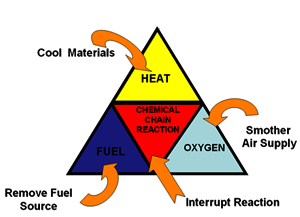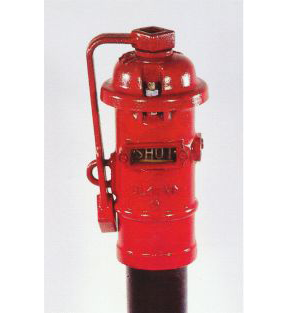In accordance with NFPA 10 (2007 edition), fire extinguishers classification depends mainly on the following parameters:
- Type and size of fire most likely to occur,
- Present hazards in the area where the fire is most likely to occur,
- Existence of electrical equipment in close proximity to the area where the fire will most probably occur,
- Ambient temperature conditions
- Other conditions, such as human presence in the area where the fire is most likely to occur, whether the suspect area is ventilated or not etc.
The classification of fire extinguishers typically consists of a letter that indicates the class of fire for which the specific fire extinguisher has been found to be effective.
Fire extinguishers classified for use on Class A or Class B fires have a rating number before the classification letter that indicates the relative extinguishing effectiveness, for example 2-A, 5-B etc. Use of this rating number before the classification letter is not done for the fire extinguishers which are rated for class C, D or K fires. However, more than one letter classification rating is also possible. In such a case, fire extinguishers having more than one letter classification (such as 2-A:20-B:C), can meet the requirements of each letter class.
There is a color coding scheme differentiating the different types of fire extinguishers. This scheme is presented below:
Picture 1 - Fire extinguishers color coding scheme
Water based fire extinguishers are suitable for class A fires only. Never use a water extinguisher for putting out electrical fires or class D fires: the flames will spread even further!
There are a lot of types of dry chemical based fire extinguishers (filled with foam or powder). These are mostly used for a combination of class A, B and C fires. The major types of dry chemical extinguishers are BC and ABC :
BC type: It is filled with sodium bicarbonate or potassium bicarbonate. Its use produces a relatively corrosive residue that has to be cleaned immediately in order to prevent any damage to materials.
ABC type: This is the so called ''multipurpose'' dry chemical fire extinguisher. It is filled with monoammonium phosphate, a yellow powder that produces a sticky residue which may be damaging to electrical equipment.
Dry chemical fire extinguishers are advantageous over CO2 based fire extinguishers because they leave a non-flammable substance on the extinguished material, thereby reducing if not eliminating the likelihood of re-ignition.
Carbon Dioxide (CO2) fire extinguishers are typically used for class B and C fires. CO2 fire extinguishers contain carbon dioxide, a non-flammable gas under high pressure. They are not very well suitable for class A fires because they may not be able to displace enough oxygen to extinguish the fire out, causing it to re-ignite.
There are basically two (2) types of fire extinguishers in use nowadays: portable ones and wheeled ones. Use of wheeled fire extinguishers has to be considered whenever we have to deal with high hazard areas, with limited availability of personnel.





